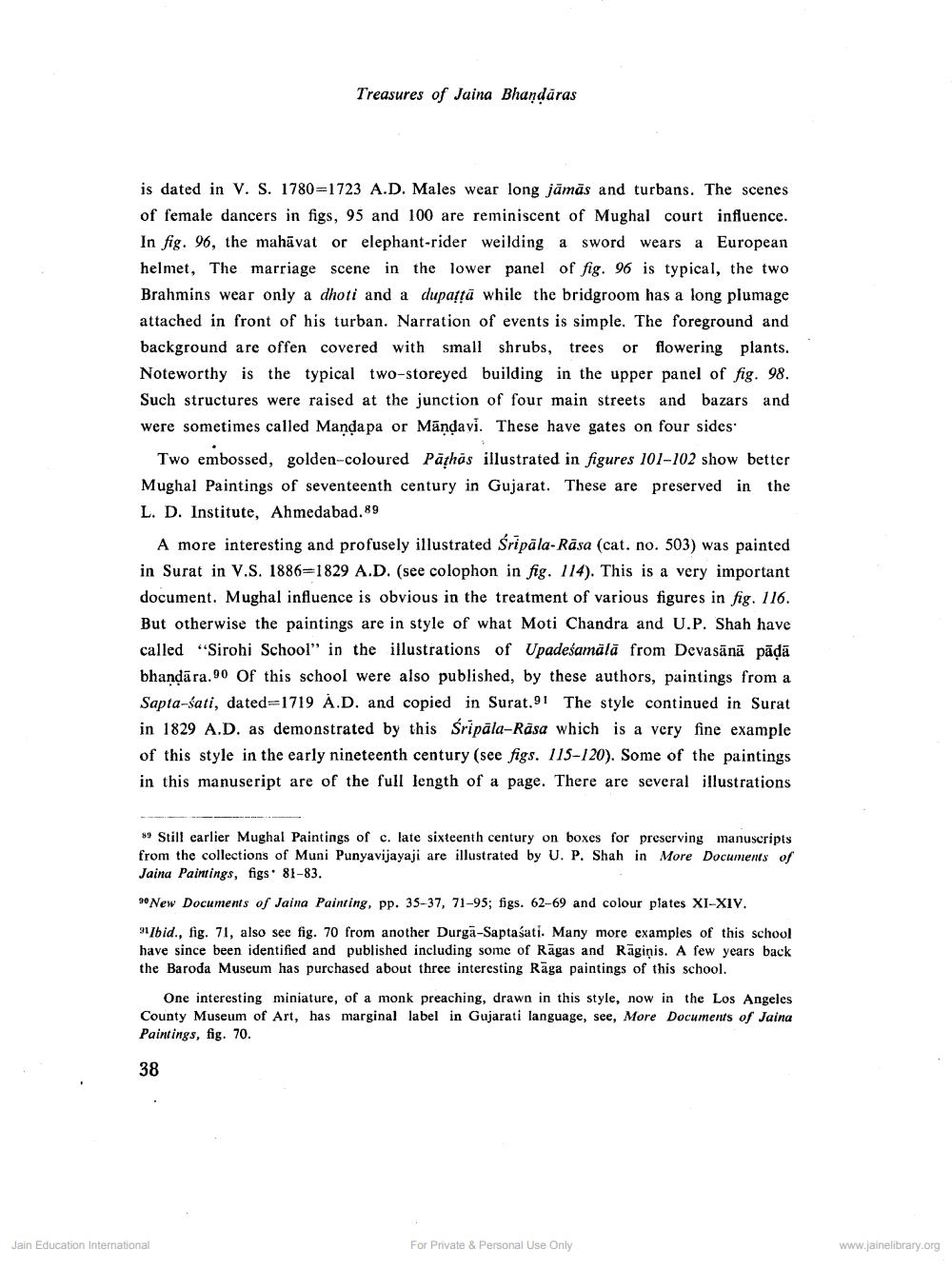________________
Treasures of Jaina Bhandaras
is dated in V. S. 1780=1723 A.D. Males wear long jāmās and turbans. The scenes of female dancers in figs, 95 and 100 are reminiscent of Mughal court influence. In fig. 96, the mahāvator elephant-rider weilding a sword wears a European helmet, The marriage scene in the lower panel of fig. 96 is typical, the two Brahmins wear only a dhoti and a dupattā while the bridgroom has a long plumage attached in front of his turban. Narration of events is simple. The foreground and background are offen covered with small shrubs, trees or flowering plants. Noteworthy is the typical two-storeyed building in the upper panel of fig. 98. Such structures were raised at the junction of four main streets and bazars and were sometimes called Mandapa or Māndavi. These have gates on four sides
Two embossed, golden-coloured Pāțhös illustrated in figures 101-102 show better Mughal Paintings of seventeenth century in Gujarat. These are preserved in the L. D. Institute, Ahmedabad.89
A more interesting and profusely illustrated Sripāla-Rāsa (cat. no. 503) was painted in Surat in V.S. 1886=1829 A.D. (see colophon in fig. 114). This is a very important document. Mughal influence is obvious in the treatment of various figures in fig. 116. But otherwise the paintings are in style of what Moti Chandra and U.P. Shah have called "Sirohi School" in the illustrations of Upadeśamālā from Devasānā pādā bhandāra.90 of this school were also published, by these authors, paintings from a Sapta-sati, dated=1719 A.D. and copied in Surat.91 The style continued in Surat in 1829 A.D. as demonstrated by this Sripāla-Rasa which is a very fine example of this style in the early nineteenth century (see figs. 115-120). Some of the paintings in this manuseript are of the full length of a page. There are several illustrations
* Still earlier Mughal Paintings of c. late sixteenth century on boxes for preserving manuscripts from the collections of Muni Punyavijayaji are illustrated by U. P. Shah in More Documents of Jaina Paintings, figs. 81-83.
3. New Documents of Jaina Painting, pp. 35-37, 71-95; figs. 62-69 and colour plates XI-XIV. 31 Ibid., fig. 71, also see fig. 70 from another Durgā-Saptašati. Many more examples of this school have since been identified and published including some of Rāgas and Rāginis. A few years back the Baroda Museum has purchased about three interesting Räga paintings of this school.
One interesting miniature, of a monk preaching, drawn in this style, now in the Los Angeles County Museum of Art, has marginal label in Gujarati language, see, More Documents of Jaina Paintings, fig. 70.
38
Jain Education International
For Private & Personal Use Only
www.jainelibrary.org




